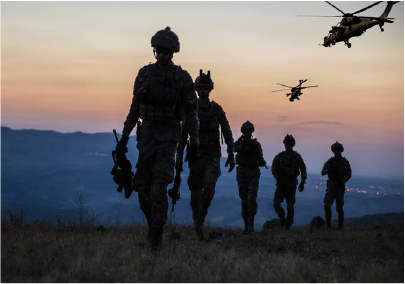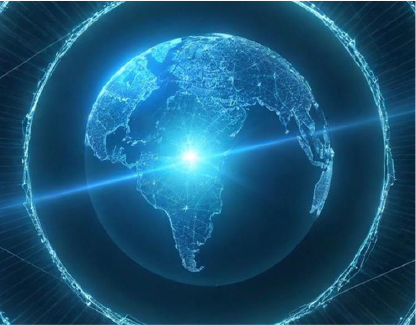




The Middle East remains one of the world’s most volatile regions, defined by unresolved conflicts, competing spheres of influence, and shifting alliances. While these geopolitical dynamics have long shaped the security landscape, the most strategically significant and rapidly evolving battleground today is cyberspace. State-aligned threat actors, ideologically motivated hacktivist groups, and criminal syndicates have increasingly adopted cyber operations as primary tools for espionage, coercion, and disruption.
Although conventional hostilities fluctuate, cyber operations have grown more persistent, frequently intensifying even during ceasefires or diplomatic negotiations. The digital domain has become a parallel theater of conflict, where nation-states pursue strategic advantage with fewer constraints, lower costs, and greater deniability. This report examines how cyber activity—particularly that driven by Iranian state-linked operators—has escalated across the region and the implications for governments, critical infrastructure, and private enterprises in the Middle East and beyond.
Regional geopolitical tensions are the primary determinants of the tempo and direction of cyber operations. Hostilities involving Iran, Israel, and various Arab states have pushed governments to rely on cyber capabilities as retaliatory mechanisms and means of projecting power. Iran, in particular, has developed a cyber strategy that compensates for conventional military limitations by emphasizing asymmetric digital operations. Israel’s offensive cyber capabilities, demonstrated repeatedly throughout 2024 and 2025, have further intensified Tehran’s motivation to respond in kind.
Consequently, cyber operations are decoupled from the physical battlefield. Diplomatic pauses or ceasefires rarely lead to a reduction in activity; instead, they often present windows for espionage, reconnaissance, or strategic positioning. This persistent digital tension ensures cyber conflict continues long after the kinetic phase has paused.
Cyber offensives in the region are relentless. Following the Iran–Israel conflict in mid-2025, Iranian state-linked hackers expanded their activity dramatically, increasing hostile operations by over seven hundred percent. Their campaigns targeted a wide range of Israeli systems, including power grids, healthcare networks, municipal services, financial institutions, transportation hubs, and civilian mobile applications. The attacks utilized a combination of ransomware, destructive malware, coordinated Distributed Denial of Service (DDoS) operations, and espionage-enabled intrusions.

Iran’s cyber focus, however, extends regionally. Since mid-2024, Iranian-linked threat actors have intensified operations across the Gulf Cooperation Council (GCC) region—particularly against Saudi Arabia, the UAE, Qatar, Bahrain, Kuwait, and Oman—and have also expanded their presence across Jordan, Egypt, and Iraq. These campaigns often blend espionage with disruptive activity, reflecting a strategic approach designed to collect intelligence, erode regional stability, and exploit critical infrastructure vulnerabilities.
One of the most active Iranian groups, MuddyWater (also referenced as APT34, Helix Kitten, or OilRig), has played a central role in recent espionage campaigns. The group is currently targeting more than one hundred government-related organizations across the Middle East and North Africa (MENA). Their attacks typically begin with phishing emails sent from a compromised mailbox accessed through NordVPN, lending an appearance of legitimacy. These emails deliver Phoenix v4, a customized backdoor designed for persistence, data exfiltration, and remote monitoring. MuddyWater’s operations align with the intelligence-gathering priorities of Iran’s Ministry of Intelligence and Security (MOIS), while more disruptive actions are commonly carried out by IRGC-aligned hacktivist groups such as Cyber Fattah and Mr. Hamza. Together, these actors form a two-tiered cyber strategy combining espionage and sabotage.
The mid-2025 conflict presented a unique cyber dynamic: Israeli offensive operations resulted in Iran gaining access to advanced malware samples. During the conflict, Israeli cyber units and aligned hacktivists—including Predatory Sparrow and Gonjeshke Darande—launched significant attacks on Iranian energy networks, banks, gas stations, and military infrastructure. These included wiper malware that destroyed data at the IRGC-linked Bank Sepah, caused outages across fuel distribution networks, and disrupted portions of the national electric grid.

Historically, Iran has demonstrated a pattern of reverse-engineering malware deployed against it to improve its own offensive toolkit. This was evident after the Stuxnet incident in 2010, which helped pave the way for the development of destructive wipers such as Shamoon. In the aftermath of the 2025 conflict, Iranian cyber units have once again focused on analyzing captured malware samples, extracting exploit mechanisms, and enhancing evasion and command-and-control (C2) infrastructures. Tools emerging from this effort—including variants resembling SameCoin and components similar to the MURKYTOUR backdoor family—suggest a new wave of highly sophisticated Iranian capabilities.
These advanced tools are expected to be deployed across the region, with likely targets including energy companies, industrial facilities, transportation networks, financial institutions, and government ministries. Past attacks on Saudi Aramco and UAE utilities demonstrate Iran’s established willingness to target critical infrastructure, and this trend is expected to intensify as reverse-engineered tools mature.
The Middle East remains a hotspot for geopolitical competition, but the most enduring form of conflict is digital. While political negotiations may temporarily de-escalate physical hostilities, cyber operations continue unabated, often expanding during diplomatic pauses. Iran’s evolving cyber doctrine—characterized by persistent espionage, strategic disruption, and asymmetric retaliation—has created a constantly shifting threat environment that affects not only regional adversaries but also neutral states and global industries.

The reverse-engineering of malware used against Iran, combined with the operational momentum of Iranian APT groups, signals a future in which regional cyber threats become increasingly sophisticated, destructive, and unpredictable. Governments and private-sector organizations across the region must anticipate long-term digital instability, where the cyber domain remains contested regardless of developments on the ground.
Without sustained regional cooperation, improved cyber resilience, and enhanced intelligence-sharing frameworks, the Middle East will continue to face escalating cyber conflict. The region stands at the threshold of a new era in which digital operations—not traditional military engagements—shape the long-term balance of power.